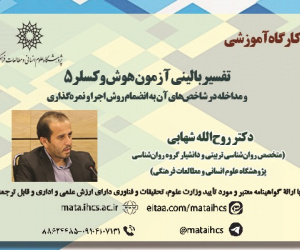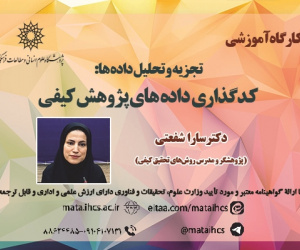بررسی ویژگی های نثر شاعرانه در رمان خیرالنساء قاسم هاشمی نژاد
آرشیو
چکیده
در روزگار معاصر در رمان و داستان با توجه به افق و جهانی که روایت می کند، از گونه های زبانی متفاوتی استفاده می شود و در ژانر های متنوعی طبقه بندی می گردد. پاره ای از داستان ها و رمان های معاصر از نثری شاعرانه برخوردارند؛ نثری که گاه به جهت زیبایی و خیال انگیزی با شعر پهلو می زند. در این رمان ها نویسنده با به کارگیری فنون گوناگون بلاغی و زبانی به زبان شعر نزدیک می شود. در میان رمان های معاصر فارسی نثر خیرالنساء اثر قاسم هاشمی نژاد، در شمار نثرهای شاعرانه جای دارد. در این پژوهش عناصر شاعرانه نثر رمان خیرالنساء، با روش توصیفی – تحلیلی از منظر نثر شاعرانه بلاغی و غنایی بررسی و تحلیل شد. یافته های پژوهش حاکی از آن است که هاشمی نژاد در عین حال که رمان خیرالنساء را به صناعات شعری و موسیقی کلام می آراید، عناصر داستانی را نیز در بستری از ابهام زیبایی شناختی جهت انتقال بی واسطه افکار و احساسات شخصیت ها و رخدادهای اصلی قرار می دهد. در این میان ویژگی های شاعرانه بلاغی، یعنی ویژگی های بیانی (مجاز ،تشبیه، استعاره و کنایه) و بدیع لفظی (مانند انواع سجع، جناس و واج آرایی) و بدیع معنوی (مراعات النظیر، حس آمیزی و ایهام تناسب) در مقایسه با عناصر شاعرانه غنایی برجستگی بیشتری دارند. به طور کلی نویسنده توانسته است با به کارگیری هنرمندانه از عناصر غنایی و بلاغی ساختاری نوین و متناسب با مضامین و محتوای رمان خلق کند و بر زیبایی فرمیک و محتوایی اثر بیفزاید و با ایجاد نوعی تعلیق معنا خواننده را در التذاد صوری و تفسیری متن مشارکت دهد.A Study of Poetic Prose in Qasem Hasheminejad’s Khayr al-Nesa
Contemporary fiction often employs diverse linguistic styles, with some adopting a poetic prose that verges on poetry through its aesthetic and imaginative qualities. Writers utilizing this technique employ rhetorical and linguistic devices to approximate poetic language. Khayr al-nesa, a novel by Qasem Hasheminejad, exemplifies this style in Persian literature. This phenomenon extends beyond Persian letters, manifesting in works by Western authors like James Joyce and Virginia Woolf. This study employs a descriptive-analytical approach to examine the novel’s poetic elements through the dual lens of rhetorical poetic prose (emphasizing figurative language and linguistic musicality) and lyrical poetic prose (focusing on subjective narration and emotional resonance). Findings reveal that while Hasheminejad integrates both dimensions, rhetorical elements—figurative devices (metonymy, simile, metaphor, allusion), verbal embellishments (parallelism, paronomasia, alliteration), and semantic techniques (association, synesthesia)—dominate. These features, coupled with a nonlinear temporal structure and multisensory descriptions, elevate the narrative into a lyrical experience. The novel’s synthesis of mystical themes and stylistic innovation aligns with Mehran Oshrieh’s theoretical framework, positioning Khayr al-nesa as a seminal work in Persian poetic prose.
Introduction
The boundary between prose and poetry blurs in narratives employing poetic prose, a style characterized by linguistic ornamentation and affective depth. Qasem Hasheminejad’s Khayr al-nesa (2010) exemplifies this tradition, akin to Western works by Joyce and Woolf. This study analyzes its poetic devices through Oshrieh’s (2015) taxonomy of rhetorical (form-driven) and lyrical (emotion-driven) poetic prose, addressing a gap in scholarship on Hasheminejad’s stylistic innovation.
Background of the Research
Prior research on Khayr al-nesa has focused on narrative structure (Qasemi & Bani-Ardalan, 2021) or linguistic stylistics (Ramezanpour, 2021), but none systematically examine its poetic prose. Parallel studies on Golestan (Tayefi & Pourshabanan, 2010) and Najdi (Beiglari, 2020) contextualize this stylistic trend in Persian fiction.
Methodology
Guided by Oshrieh’s framework, this study adopts a descriptive-analytical approach to dissect:
Rhetorical poetic prose: Figurative language and phonological patterns. It maintains linear causality despite rhetorical ambiguity
Lyrical poetic prose: The narrative elements (setting, tone, characterization) reflect subjective perception, and external objects become vessels for internal emotions
Analysis
The magical realist novel Khayr al-nesa chronicles a Mazandarani woman who gains miraculous healing powers after a mystical encounter, yet cannot heal her own family. These powers—bestowed and later reclaimed by a mysterious boy—frame the narrative.
Analysis of Rhetorical Poetic Prose Figurative Devices: The author extensively employs rhetorical figures. Metonymy creates layered meanings, similes craft multisensory imagery that poeticizes mundane actions, light-based metaphors visualize mystical concepts like cosmic awareness, and innuendo achieves concision while deepening semantic resonance.
Ornamental Devices: The text’s musicality is enhanced through:
Phonetic devices: Parallelism (particularly in verbs) establishes rhythmic flow, paronomasia enriches textual beauty through wordplay, and alliteration strengthens acoustic texture.
Semantic devices: Symmetry (often anatomical) enhances textual cohesion, synesthesia generates innovative imagery through sensory fusion, and deliberate ambiguity invites active reader engagement and aesthetic pleasure.
Analysis of Lyrical Poetic Prose Chronotope: Time assumes a mythic, cyclical quality that disrupts linear chronology, evoking timelessness. Space manifests dually as concrete (northern forests) and abstract (spiritual journey to Karbala), achieving trans-spatial dimensions.
Descriptions and Characterization:
Multisensory descriptions create a vivid mystical atmosphere
Characterization employs both direct and indirect methods, with the moral dichotomy between purity (Khayr al-nesa) and corruption (envious, deceitful characters) conveying ethical messages
Plot Structure: The narrative follows a cohesive three-act structure that blends fantastical elements with sociohistorical realities, building compelling suspense. The revelation that Khayr al-nesa is the narrator’s grandmother ultimately forges profound connections between author, narrative, and reader.
Conclusion
Qasem Hasheminejad has masterfully synthesized rhetorical and lyrical poetic prose to create a multilayered, innovative work. Through complex literary devices, he renders profound mystical and mythic concepts within a symbolic narrative framework. The lyrical dimension, employing mythic temporality and multisensory descriptions, elevates the narrative to a poetic experience. Analysis reveals the rhetorical dimension predominates over the lyrical in this novel. Ultimately, Khayr al-nesa stands as a brilliant practical application of Mehran Oshrieh’s theoretical framework in long-form fiction. Hasheminejad’s synthesis of rhetorical ornamentation and lyrical subjectivity redefines Persian magical realism. While rhetorical devices dominate, their interplay with lyrical elements—particularly in mythicizing Mazandarani folklore—creates a uniquely immersive narrative. This study underscores Khayr al-nesa’s contribution to theorizing poetic prose in long-form fiction.







